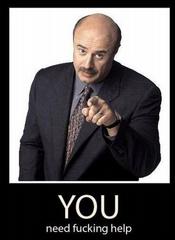R
rdean
Guest
The CIA does not arrest people.
The Taliban were the ruling government of Afghanistan, and were the reason that al Qaeda was able to attack us.
Iraq was in violation of the 1991 Cease Fire Agreement, thus the original state of hostilities existed.
Far from being innocent.
All this tells me as that your knowledge of military strategy is nil.
And we bomb everybody who is in violation of a forced agreement. Right?
Muslim etiquette demands that once hospitality is given, it's given as long as it's not violated. The Taliban couldn't have given up Bin Laden. However, they could have been negotiated into asking him to leave the country. Bush thought Shiites and Sunnis were working together because he didn't know the difference between the two. Understanding another culture is the key to success.
Republicans are bullies. They are NOT interested in "understanding", not when bombs and threats and saber rattling work so well. The problem, that's only an "illusion". In the long run, you moved two steps forward and twenty back. The two forward seemed to work so well, they can't see the twenty back. Not, "can't see, "refuse" to see.
You are the kind of Fool that Insurgents depend on every time they are in a jam. Jack Ass is too good a term for you. Join the other side please. You will do less harm in the end.
Name calling, finger pointing, screeching. These are the things the uneducated do when they don't understand something. They become frustrated and scared. They lash out and attack. Their limited intelligence, lack of comprehension and inability to problem solve becomes apparent. For eight years, Republicans were in power and what did they do? Bombs and threats and saber rattling and torture. Tens of thousands of American dead. Our enemies stronger. Our country less safe. Our economy shattered.
And what do they do now? They want the president to "fail".
Eight years of failure and they believe they have the answer. "Just do what we did under Bush."

